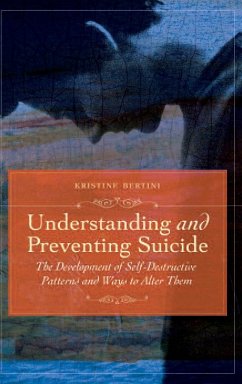Every 18 minutes, there is a suicide attempt somewhere in the United States, with some 30,000 of those resulting in completed suicide each year. Worldwide, there are more than 1 million suicides annually. We know the basic facts: Most of the people were depressed or suffered another mental illness, and many were facing stressful life events with which they could not cope. But is there no way to prevent the tragedy? Author Kristine Bertini, a clinical psychologist, says one of the most effective means may be to understand first how suicidal tendencies and thinking develop, how environment, biology, culture, and societal factors all play a role in predisposing some people to give up hope and see death as the only way to end their suffering. In this book, Bertini explains the development of suicidal thinking and, through patient vignettes, illustrates the ways this thinking develops. She also describes and illustrates signals friends and loved ones as well as professionals can watch for pointing to such thinking, which may be kept secretive by the person at risk, as well as approaches that can be used to alter tendencies and thinking for the person at risk.
Hinweis: Dieser Artikel kann nur an eine deutsche Lieferadresse ausgeliefert werden.
Hinweis: Dieser Artikel kann nur an eine deutsche Lieferadresse ausgeliefert werden.








